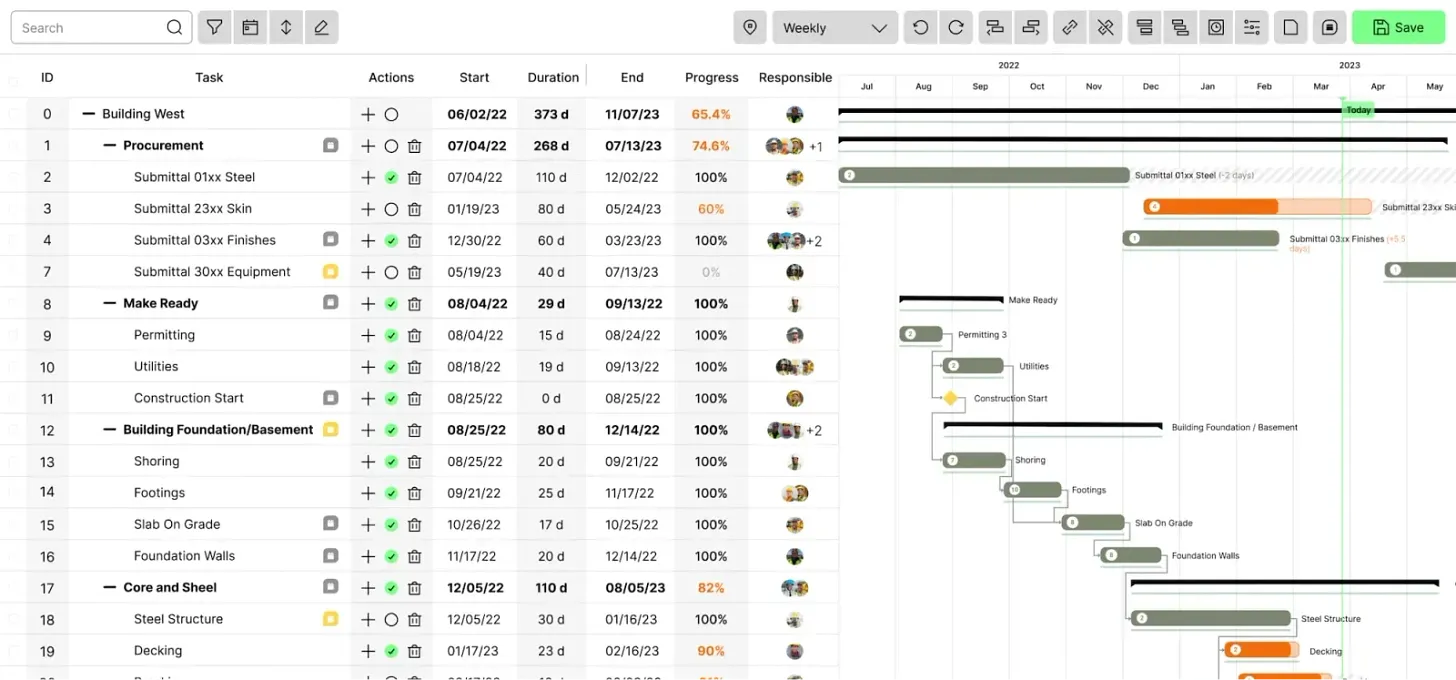👋 Hey, Kyle here! Welcome to The Influential Project Manager, a weekly newsletter covering the essentials of successful project leadership.
Today’s Overview:
The world’s most valuable skill in project management is flow. Unfortunately, most project managers think that just creating a procurement log and a P6 schedule is enough.
Speed comes from preparation, not pushing. I know because I wasted years learning this lesson the hard way.
Here are four frameworks to help you master flow in your construction projects and save yourself from countless headaches.
🚧 Get a handle on your project constraints.
Outbuild is designed for one thing: to make construction scheduling easy, connected, and effective. Here’s why top contractors rely on it:
✅ Easy to use: Drag-and-drop features and user-friendly layout mean your team can hit the ground running. No long training needed.
✅ Everyone has access: Let your trade partners, PMs, and PEs all log in, plan their work, and communicate directly.
✅ Seamless integration: Sync your scheduling and field planning effortlessly with Procore. Outbuild keeps all your project workflows in one place.
✅ Real-time reporting and analytics: Track project progress, delays, and resources with powerful analytics that help you make fast, informed decisions.
Outbuild helps you manage projects better, so you can focus on what truly matters.
👉 Book a live demo (30 day free trial included).
♻️ How to make your project flow
Filed under: Lean Tools & Tactics
The world’s most valuable skill in project management is flow.
Unfortunately, most project managers think that just creating a procurement log and a P6 schedule is enough.
They spend hours trying to manage their projects, only to end up dealing with constant delays, miscommunication, and missed deadlines.
The old way of focusing solely on procurement isn’t enough anymore. To be successful today, you need to understand flow by making sure everything is made ready before work begins.
Speed comes from preparation, not pushing.
I know because I wasted years learning this lesson the hard way.
But my loss is your gain.
Here are four frameworks to help you create flow in your construction projects and save yourself from countless headaches.
Framework #1: Manage the Entire Supply Chain
The biggest mistake I made? Thinking procurement alone would get the job done.
To create flow, stop focusing solely on procurement and start managing the entire supply chain. Procurement is just one step - buying what you need. The supply chain, however, covers all of the resources required for the project.
According to this framework, you need to see the big picture and plan every step in the supply chain to keep your project moving without interruption. Here’s the process for everything:
Design it → Buy it out → Detail it → Approve it → Make it → Transport it → Take it the place of work → Install it ✅
Each step has activities, information, and money tied to it. If you don’t manage every step, for every task, you’ll hit a roadblock.
Missing information, late deliveries, or unapproved designs will do nothing but slow you down.
Framework #2: Use “Full-Kit” Verification
Hearing this concept completely changed the way I thought about flow.
Rule of Flow: If you don’t want to get stuck, verify full-kit before moving forward.
The full-kit is a checklist that contains all the elements that are necessary to complete a task or a project.
According to Full-Kit Verification, you should never start a task unless you have everything needed to finish it.
Project Managers should verify submittals, drawings, approvals, and materials 3-6 weeks in advance.
Superintendents and foremen should ensure tools, manpower, space, and inspections are ready 1-3 weeks ahead.
Only start what you can can finish. Make sure you always have a full-kit.
Pro Tip: Use a full-kit checklist for every task on the schedule so you can maintain your flow.
Framework #3: Set Clear Expectations and Track Production
Struggling with constant confusion on-site?
Here’s where most people go wrong: they assume subcontractors will figure it out on their own. That leads to chaos.
Instead, set clear expectations from day one by conducting:
Buyout meetings (to clarify scope)
Pre-mobilization meetings (2 weeks after contract)
Pre-construction meetings (3 weeks before work starts)
First-in-place inspections (right after the first work sample is done)
Then, track your entire production using look-ahead schedules, weekly work plans, day plans, and zone maps.
This planning system keeps everyone accountable, communication clear, and helps maintain flow.
Framework #4: The Make-Work-Ready Checklist
Source: Jason Schroeder, Elevate Construction
I consider this the Bible of project flow.
Want to guarantee smooth flow? Before starting any task, make sure all 17 items on this checklist are ready:
Conditions of satisfaction
Support team
Primary planning
Contingency planning
Materials
Equipment
Tools
Toolkit
Information
Permissions
Layout
Preceding task
Safety planning
Quality planning
Standard work
Required training
Space
Do you have all this? Then you’re READY.
Pro Tip: In your weekly meetings, spend 10 minutes reviewing the upcoming activities to verify all 17 items are ready. If not, identify the roadblocks and make them a priority of the team.
Final Thoughts
Remember: Speed comes from preparation, not pushing.
When you manage your supply chain, verify full-kit, set clear expectations, and make sure every task is ready, you will be prepared and your projects will flow. You’ll hit deadlines, reduce stress, and see smoother operations.
These 4 frameworks completely changed the way I manage flow in construction. I wish I had known them sooner.
Apply these steps and watch the difference.
Until next week,
Kyle Nitchen
🧰 Kyle’s Toolbox
Optimize your project with my partner, Outbuild.
Tired of juggling too many tools to manage your project’s constraints, materials, RFIs, and schedules? Outbuild has the solution.
With Outbuild’s integration with Procore, you can tie everything together in one streamlined system. From RFIs and submittals to materials and procurement, everything is linked directly into your project schedule. This means no more guessing if your team has everything they need to start work.
Full-kit and make-work-ready are no longer just buzzwords. With Outbuild, you can ensure that every task is actually ready before work starts, all while managing and tracking your constraints in real-time.
How Outbuild Helps:
Constraint Management: Track and manage every actionable item, constraint, and task, all synced with Procore RFIs.
Lookahead Planning: Connect your lookahead tasks directly to any constraints or RFIs impacting them, making sure nothing slips through the cracks.
Procore Integration: Push your master schedule to Procore with one click, and sync RFIs and submittals effortlessly.
Outbuild helps you keep your project flowing smoothly—just like you’re learning in today’s article.

Whenever you're ready, there are 5 ways I can help you:
Get my first book! No Bullsh*t Project: A Project Manager’s Guide to Successful Project Leadership
Upgrade your PM software. Experience the future operating system for construction and real estate development.
Get my full toolbox (free). Access 30+ software and hardware tools I'm using today.
Learn Takt Planning. Elevate your skills as a scheduler, planner, and lean builder with the Takt Planning & Control online course. Use code "Influentialpmtakt" for 30% off.
Advertise in my newsletter. Put your brand in front of 4,100+ construction project managers, leaders, and execs. (Booked out 5 weeks)





